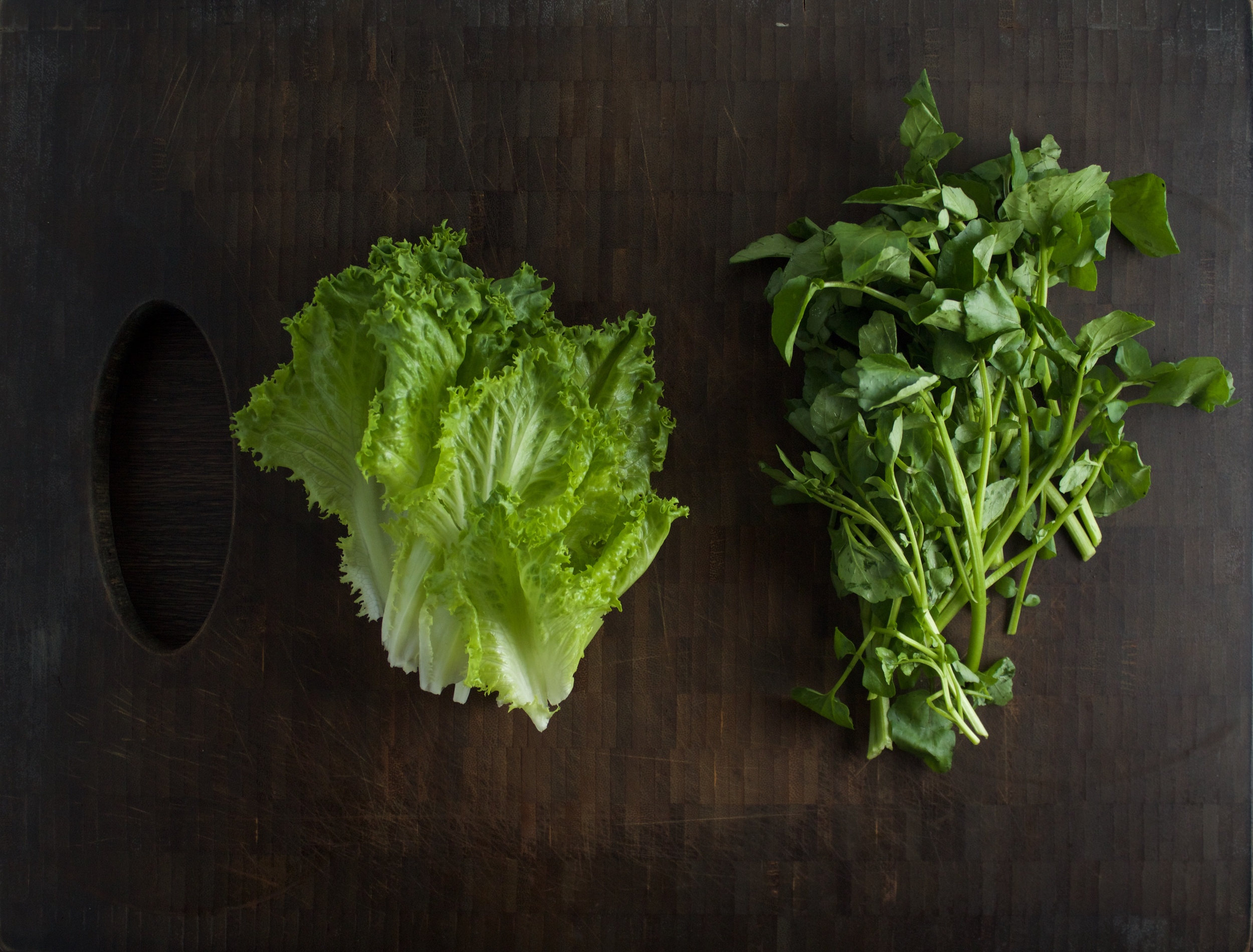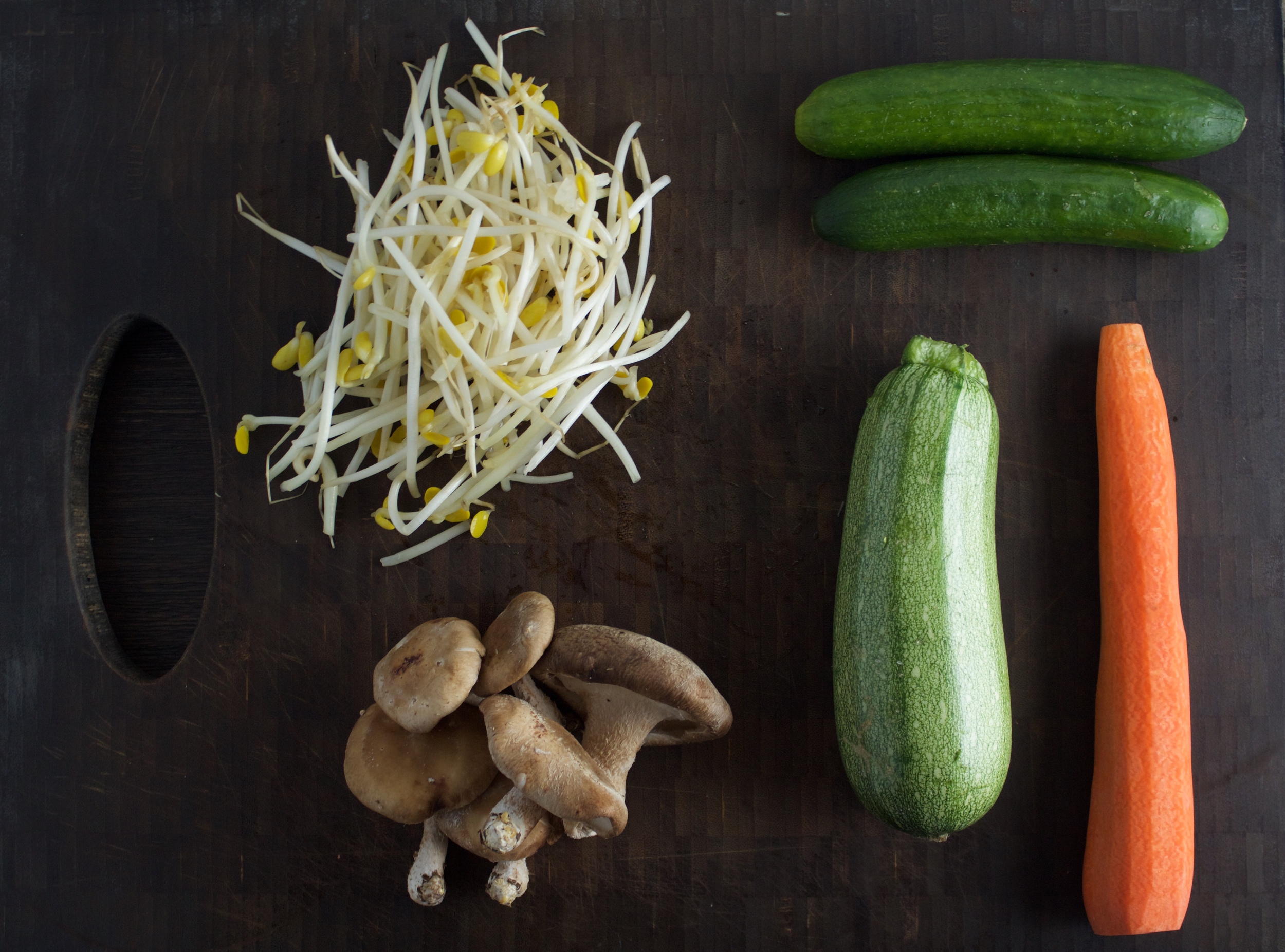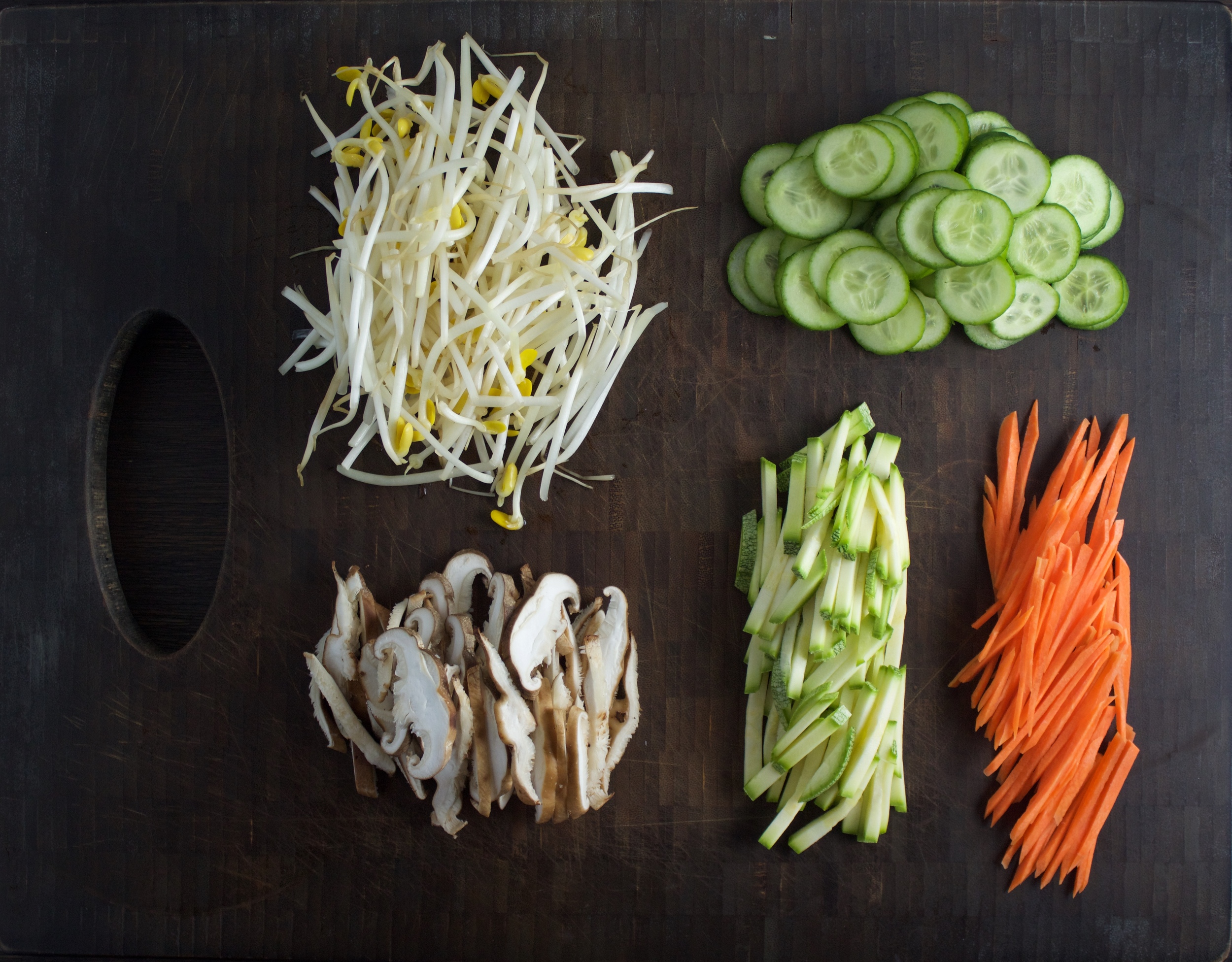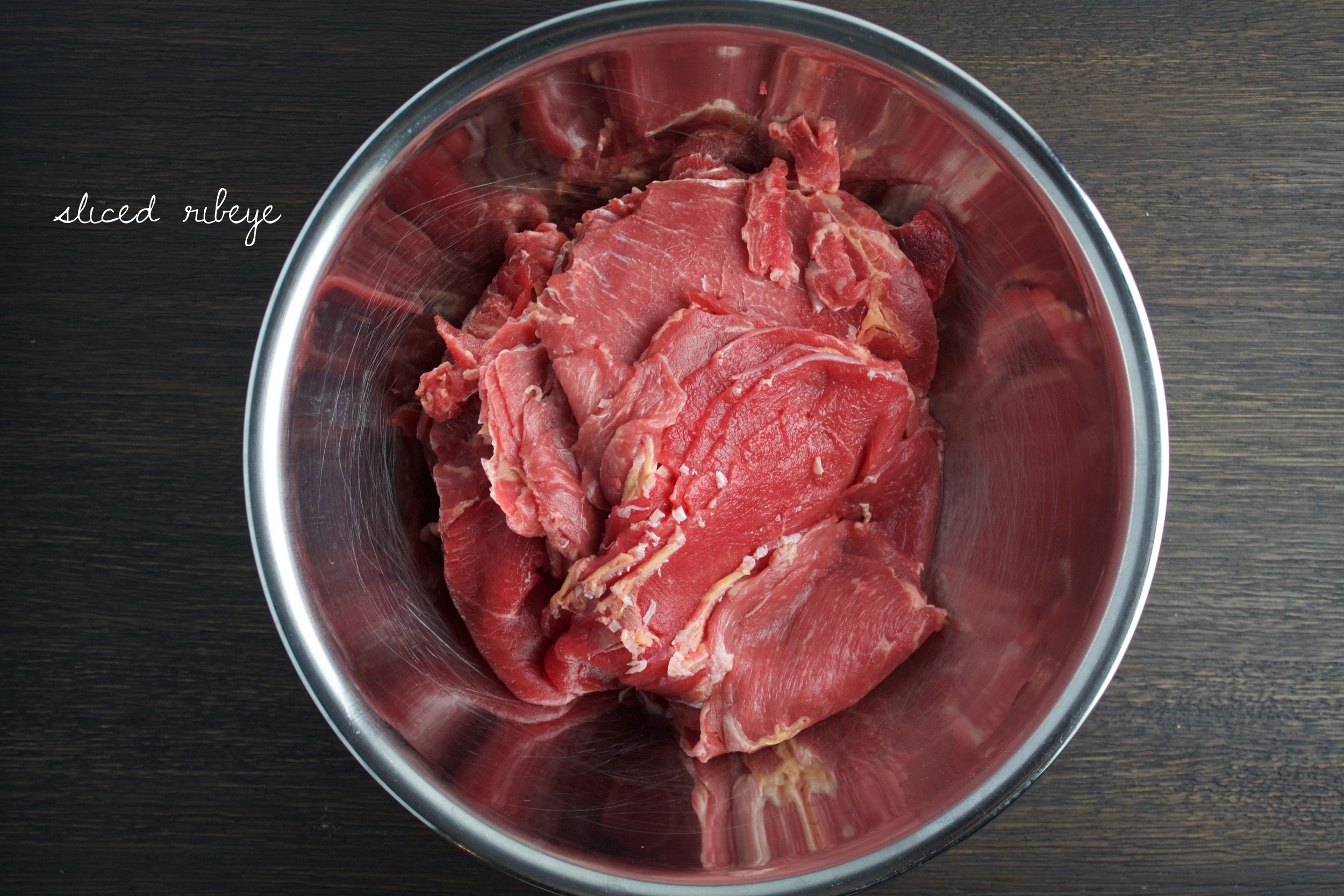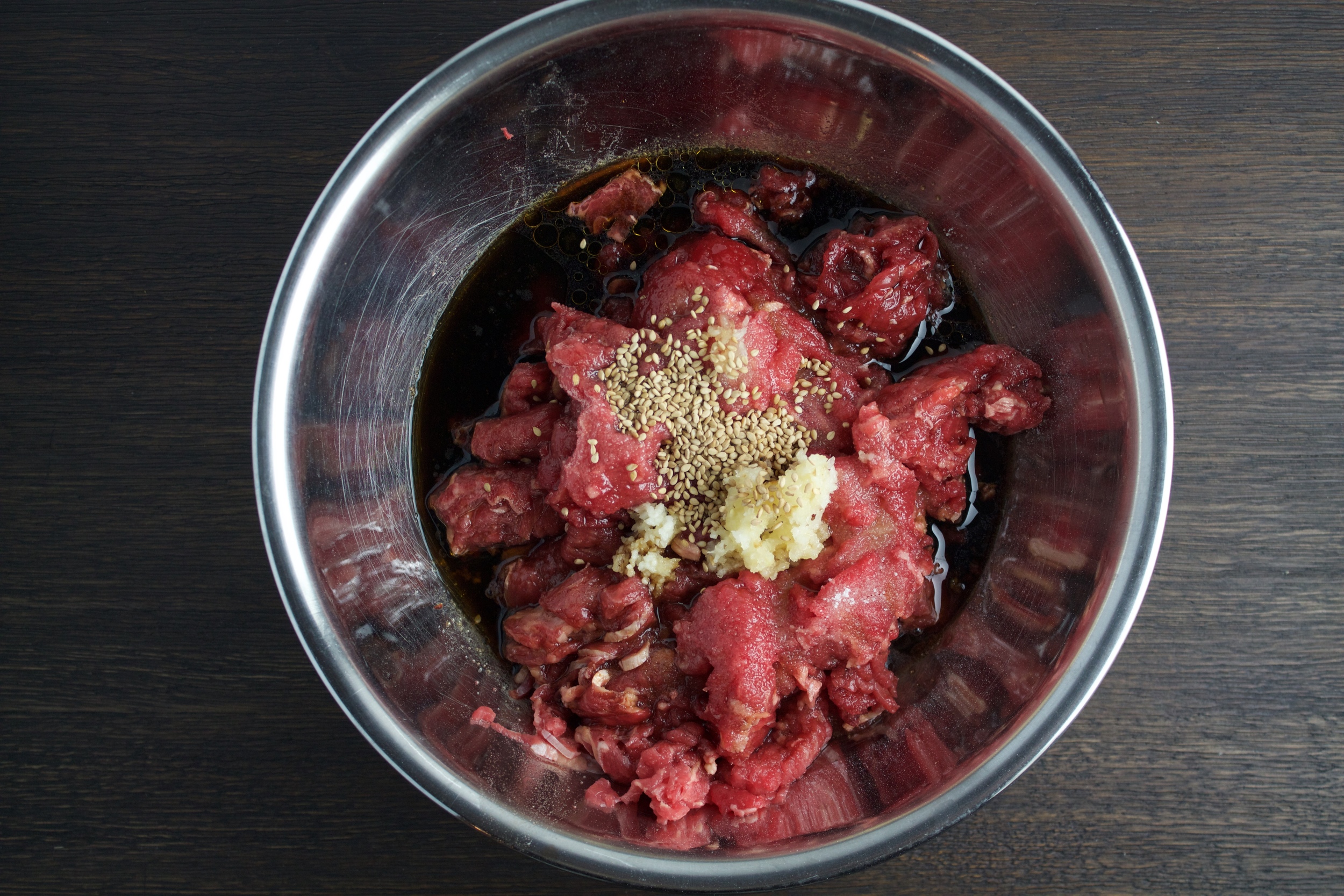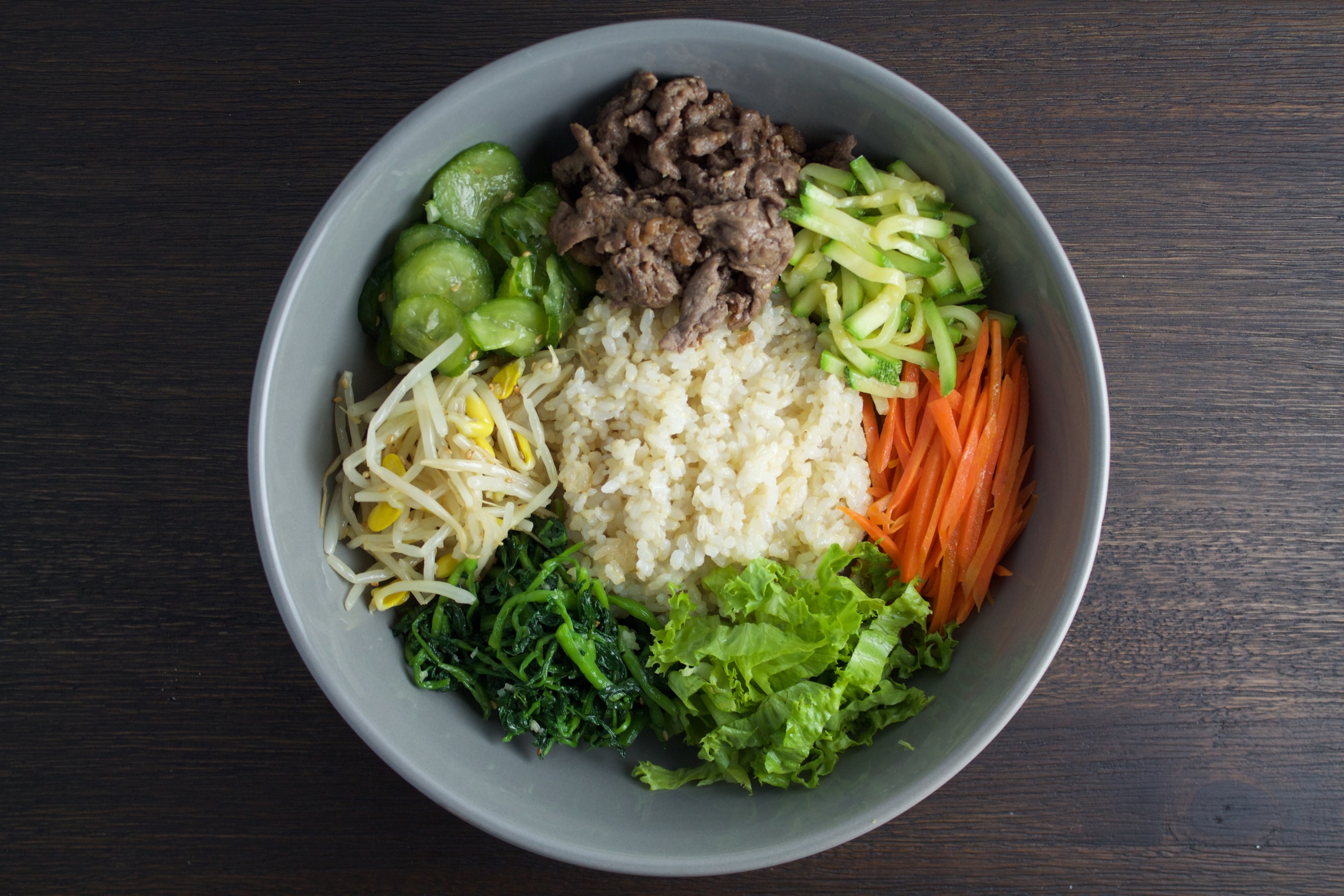Mom's Bibimbap
/If you've been living under a rock and haven't heard of it, bibimbap is a popular Korean dish whose name translates to "mixed rice." The beauty of bibimbap is that it can be customized to your liking - just like a burrito bowl or salad. The convenience and freshness of this dish has helped it gain popularity in the recent years.
When it comes to learning how to make Korean food, the trickiest thing for me is that my mom rarely ever measures anything out. This is where experience trumps everything else and it's really all about mastering the art of eyeballing and seasoning to taste. This is going to be one of those posts that's less like a traditional recipe with precise measurements and more of a how I prepare a bibimbap bowl. It's also important to note that the most time consuming part of making bibimbap is preparing all the individual ingredients. Once you have everything prepared, you throw it all together and you're done.
Ingredients serving size of 4-5
head of leaf lettuce
1 bunch of watercress
1 bag of mung bean sprouts (available at most Asian grocery stores)
2 cucumbers
handful of shiitake mushrooms
1 zucchini
1 carrot
sesame oil
Kosher salt & black pepper
2-3 cloves of garlic, minced (used throughout preparation of vegetables)
1 package of sliced ribeye (1-1.5 lbs)
marinade for the meat:
2 tbsp. sugar
1 tbsp. roasted sesame seeds
2 cloves of garlic, minced
2 tbsp. sesame oil
1/3 cup soy sauce
1 egg for each person
steamed white or brown rice
Korean spicy cocktail sauce (this is the one I use)
Note: sliced ribeye is available at most Asian grocery stores or you can ask the butcher at any grocery store to thinly slice some ribeye for you; if you are at a Korean grocery store, they often have pre-marinated ribeye called bulgogi so that is always a convenient option
To prepare meat:
- Place your ribeye in a large mixing bowl. Add all five ingredients for the marinade to the meat and either with a fork or gloved hand, massage the marinade into the meat until well-mixed. Let sit while you prepare the vegetables. (Leftover marinated meat can be refrigerated in an airtight container for 1-2 days, until ready to be cooked)
To prepare vegetables:
First, start by washing all your vegetables.
- Lettuce: Pat dry with a paper towel and cut to coarse shreds.
- Watercress: Blanch in boiling water for 1 min and then squeeze excess water out. Season with sesame oil, salt, and 1 tsp. of minced garlic.
- Mung bean sprouts: Steam in an inch of salt water until softened. Remove from water and drain off any excess liquid. Season with sesame oil.
- Cucumbers: Slice the cucumber into thin round slices, place in a bowl, and toss with salt. Let sit for 10 minutes and then drain off any water rendered from the cucumbers. Add black pepper and minced garlic to taste.
- Shiitake mushrooms: Julienne mushrooms, place in a bowl, and toss with salt. Let sit for 10 minutes and then drain off any water rendered from the mushrooms. Saute in a hot pan with about 2 tsp. of canola oil for just a couple minutes.
- Zucchini and carrots (prepared the same way, but not together) : Julienne your carrots and zucchini. Saute these in the same pan you used for the shiitake mushrooms for just 2-3 minutes until softened. Season with salt to taste.
Once your vegetables are all prepped and set aside, heat a medium pan over med-high heat. Add a turn of canola oil and when the oil starts to glimmer, add marinaded meat to the pan. Stir around with wooden chopsticks to separate and turn the pieces until evenly cooked. This should only take 3-4 minutes in a hot pan. In another small pan, fry up an egg for each person to top their bibimbap (either sunny side up or over-easy).
FINALLY! We're ready to eat. Well, almost.
Drizzle some sesame oil over the rice before mixing everything together. Add as much spicy sauce as you can handle and stir it up!
If you did a good job, you'll end up with something like this ; )


